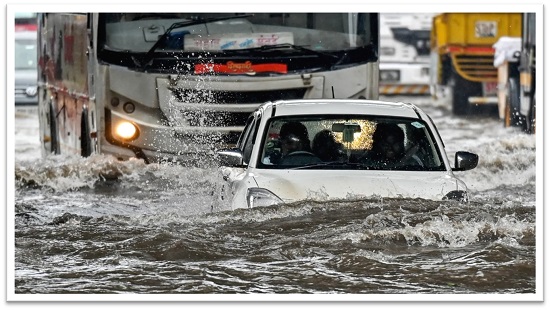
Mumbai Rains 2025: Four Dead, Hundreds Evacuated as Maharashtra Battles Heavy Downpour
Maharashtra is once again grappling with the impact of heavy monsoon rains, as Mumbai, Pune, and several districts reported severe waterlogging and flooding over the last 24 hours. The State Disaster Management Department confirmed that four people lost their lives, while over 120 individuals were safely evacuated from affected areas. The scale of the rainfall, combined with the geography of Marathwada and Vidarbha, has made this another testing moment for the state’s disaster response machinery.
Despite the challenges, coordinated rescue and relief operations are underway. The National Disaster Response Force (NDRF), State Disaster Response Force (SDRF), and Army units have been deployed in multiple districts, while the Indian Air Force (IAF) airlifted villagers in Beed. Deputy Chief Minister Eknath Shinde personally reviewed the situation at the state’s disaster management cell, underscoring the leadership’s active involvement in ensuring safety and rapid relief.
Weather Forecast and Alerts Across Maharashtra
According to the India Meteorological Department (IMD), Mumbai is likely to receive moderate to heavy rainfall on September 16, while the Marathwada region, including Chhatrapati Sambhajinagar, will see its third consecutive day of heavy showers. A yellow alert has been issued for Mumbai, Palghar, and parts of Vidarbha, warning residents of thunderstorms and lightning. These forecasts highlight the need for preparedness in low-lying and flood-prone areas.
Schools Closed in Beed, Authorities Prioritize Safety
As a precautionary measure, the administration in Beed district has announced the closure of schools for classes 1 to 7. This decision reflects a proactive approach to safeguard children in areas where inundation has disrupted normal life. The swift airlifting of 11 villagers and evacuation of 40 more by the Army further demonstrates the effectiveness of coordinated action between state and central agencies.
Mumbai’s Water Security Strengthened by Rising Lake Levels
Even as parts of the city remain waterlogged, Mumbai’s water security has improved significantly. The Brihanmumbai Municipal Corporation (BMC) announced that with reservoir levels touching 98.82% of their total capacity, a water cut is unlikely in the coming season. The seven lakes supplying potable water to the city—Upper Vaitarna, Tansa, Tulsi, Modak Sagar, Middle Vaitarna, Bhatsa, and Vehar—collectively hold 14.30 lakh million litres, the highest level recorded on this date in three years. With each one percent of stock capable of sustaining Mumbai for three days, the city is well-placed to meet demand for the next 300 days.
Western Suburbs Record the Heaviest Rainfall
Rainfall distribution across Mumbai has been uneven. In the 24 hours ending at 8:00 am on Tuesday, the western suburbs recorded the heaviest showers with an average of 40 mm, followed closely by 39 mm in the island city division and 35 mm in the eastern suburbs. The Santacruz observatory registered 31 mm of rainfall, while Colaba coastal observatory measured 27 mm. These variations highlight the complex rainfall patterns within the city, underscoring the importance of localized monitoring and drainage management.
Resilience Amid Challenges
While the rains have tragically claimed lives and disrupted daily routines, the coordinated efforts of disaster management teams, civic bodies, and state leadership point toward a system better prepared than in past years. The combination of timely alerts, proactive evacuations, and strong water reserves reflects both vulnerability and resilience. Going forward, strengthening urban drainage systems, investing in flood-resistant infrastructure, and expanding early warning systems will be critical to ensuring that Mumbai and Maharashtra can face future monsoons with greater confidence.





